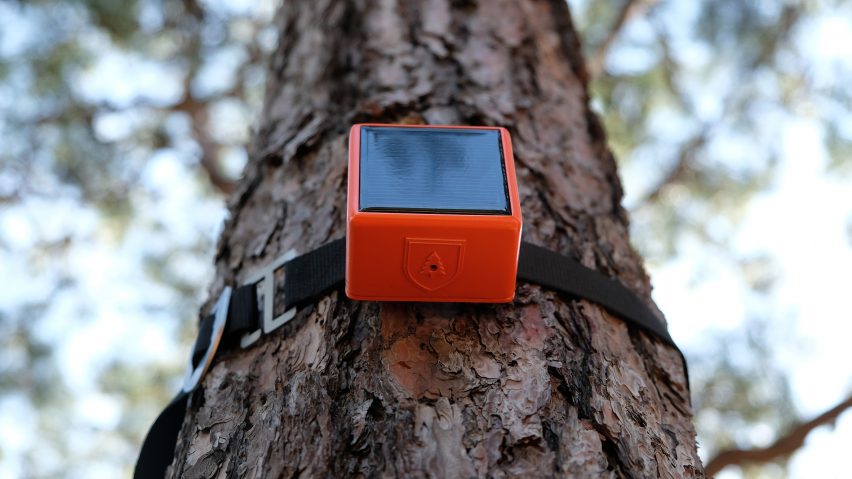
"The trees themselves" raise wildfire alarm in ForestGuard detection system
Wildfires can be detected before they spread or even before they start using a new satellite-enabled sensor system created by a group of Turkish recent design graduates and spotlighted by Dezeen as part of our Designing for Disaster series.
Like an Internet of Things for woodland, ForestGuard is a system of sensors that is fitted to trees to detect changes in the air and alert the local authorities if a fire is present.
Only one sensor is required for every 16 hectares of forest — or around 16,000 trees — and the system can distinguish between different types of emissions, such as that from a wildfire versus a cigarette or car exhaust, to avoid false positives.
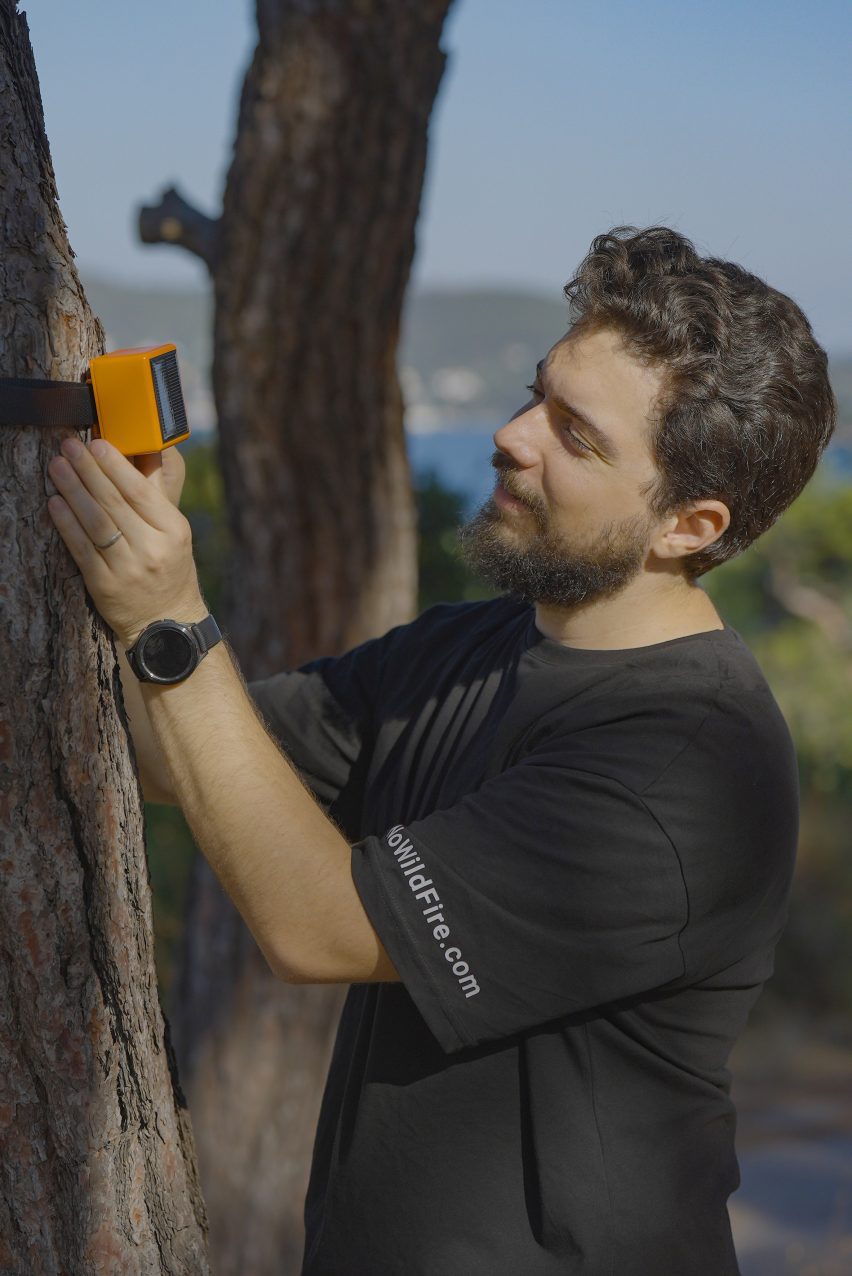
ForestGuard chief technology officer Suat Batuhan Esirger told Dezeen that the product reduces the amount of time it takes for firefighters to be notified of a fire from an average of 90 minutes to just 15.
In a recent example, it allowed the firefighters of the Turkish archipelago of Princes' Islands to extinguish a wildfire when it had only burned through an area of land around the size of a dining table.
"It was the middle of the night, there was nobody passing by, nobody to report on the fire until it got a lot bigger than when we detected it," said Esirger. "That was a huge win for us, seeing it in action."
Esirger and the other members of the ForestGuard team — Ecem Ertan, Onur Sertgil and Rana Imam Esirger, students of İstanbul Bilgi Üniversitesi — began work on the invention after the devastating 2021 Turkey wildfires, for which they all provided volunteer assistance.
Esirger aided the search-and-rescue effort as a drone pilot, which he says allowed him to see the whole process from end-to-end and start thinking about what could be done better.
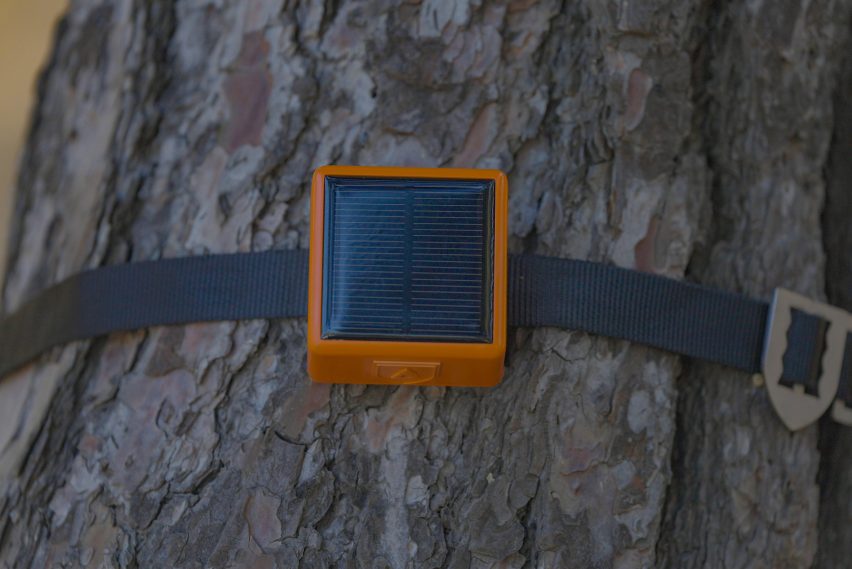
Around the world, wildfire detection is currently managed through a mix of drones, satellites and thermal imaging — all options that have their drawbacks, chiefly that they are restricted to looking above the treetops.
"We focused on the phrase, 'what if the trees themselves notify us'," said Esirger. "We approached it like a smartwatch; let's monitor the air in the forest below the tree line. So if something abnormal happens, we will know about it."
The system they came up with measures and analyses temperature, humidity, air pressure and the levels of various gases to identify the presence of a fire, with trained machine-learning algorithms to differentiate between wildfire smoke and other kinds of emissions.
Their initial design used a low-power terrestrial network called LoRa to connect the sensors to the internet, but they've since switched to satellite connectivity provided by American company EchoStar.
The change makes the system "disaster-proof", claims Esirger, whereas some of the older LoRa devices were sent offline when earthquakes hit Turkey in 2023.
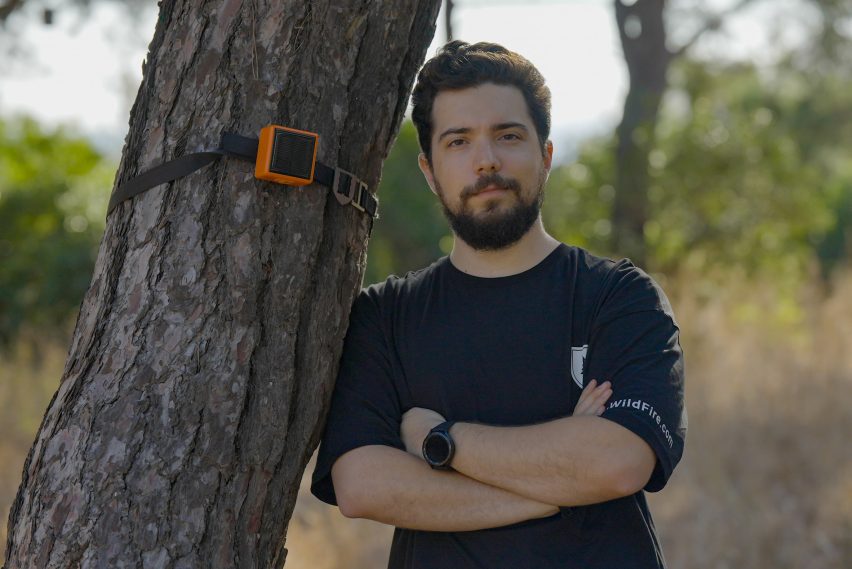
Other measures also add to the ForestGuard sensors' resilience. Their power comes from a solar panel with a long-lasting supercapacitor for energy storage and they're equipped with anti-theft mechanisms.
They are also made of engineered plastics that can withstand ultraviolet light exposure, animal interference and temperatures of up to 1,500°C, meaning they will survive for part but not all of a forestfire.
"We made it fire retardant as much as possible, so they will continue sending data until their last breath," said Esirger. "From that data we can predict the spread direction of that wildfire, so we can feed that data to the authorities and they can fight fire more efficiently."
ForestGuard's algorithms also allow for something perhaps even more useful than a faster disaster response: prevention.
Using the data collected through the sensors, ForestGuard can tell when the conditions are such that a fire is likely, giving firefighters the opportunity to carry out measures such as cleaning out dried brush or preventatively spraying water.
Since the wildfire in August, the firefighters at Princes Islands have been following these warnings and not had any further incidents, said Esirger.
According to ForestGuard, the system can protect 500 trees for US$1 a year, assuming the devices remain in place for five years.
ForestGuard won the Turkish heats of the James Dyson Award 2023 and is now up against regional winners from around the world in the international competition, with the winner set to be revealed on 15 November.
The product is further along in its development than most others in the contest, with devices already on sale in Turkey and ForestGuard looking to expand into markets including France, Australia and the USA in the coming months.
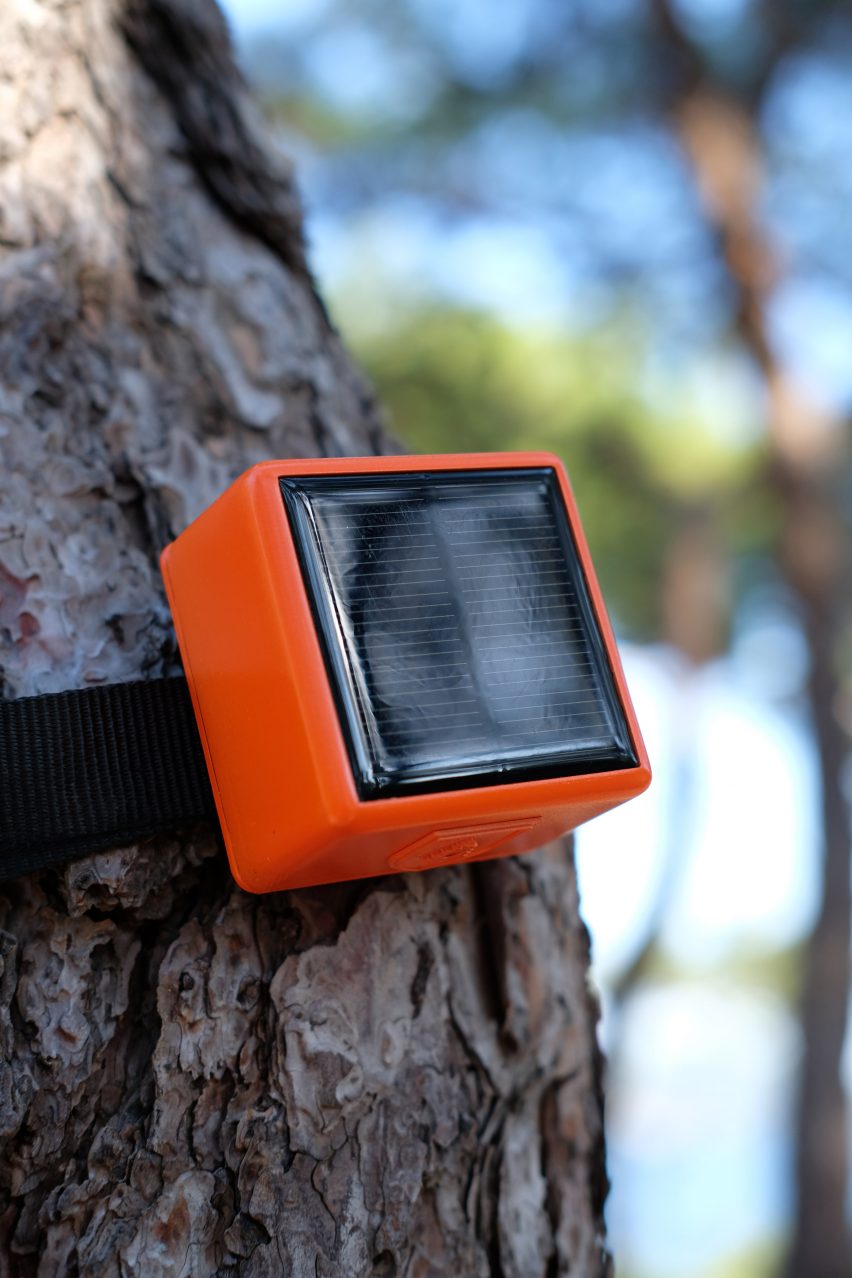
Esirger hopes that the invention will be seen not just as a tool to fight fires on a regional level but as part of a united, global battle to minimise the impacts of climate change. Here, wildfires form a "vicious cycle", he said, that is often underappreciated.
"Forest fires emit carbon dioxide," said Esirger. "Carbon dioxide causes global warming. Global warming causes a lot more wildfires. So it just feeds itself. We are trying to minimise this increase."
Reflecting on the exacerbation of wildfires by climate change earlier this year, GGA+ architecture studio partner Greg Kochanowski said that the design professions were not doing enough to address the problem of wildfires.
"What is needed is a new holistic, synthesised, design discipline" fusing multiple areas of expertise, he wrote.
The photography is courtesy of ForestGuard.

Designing for Disaster
This article is part of Dezeen's Designing for Disaster series, which explores the ways that design can help prevent, mitigate and recover from natural hazards as climate change makes extreme weather events increasingly common.